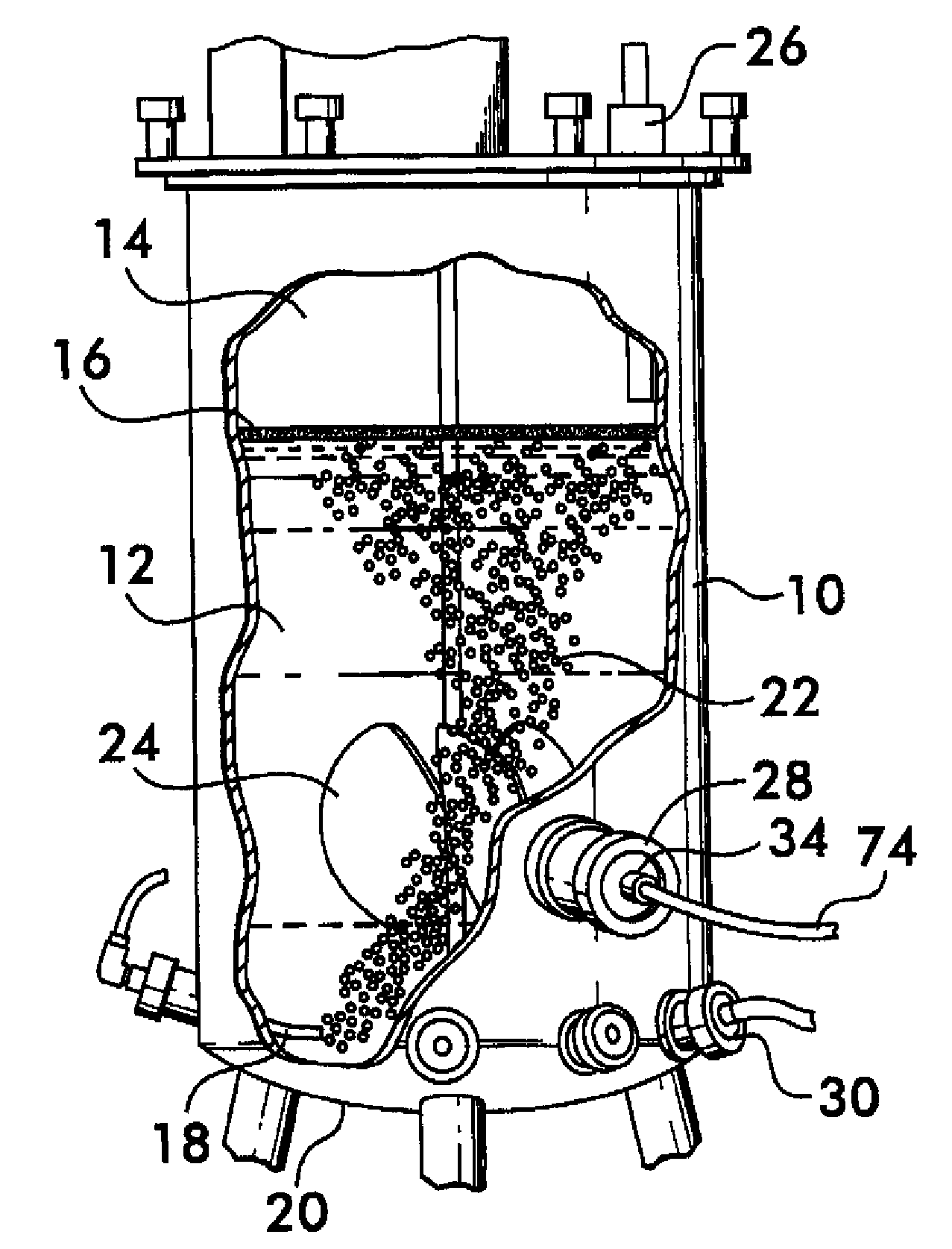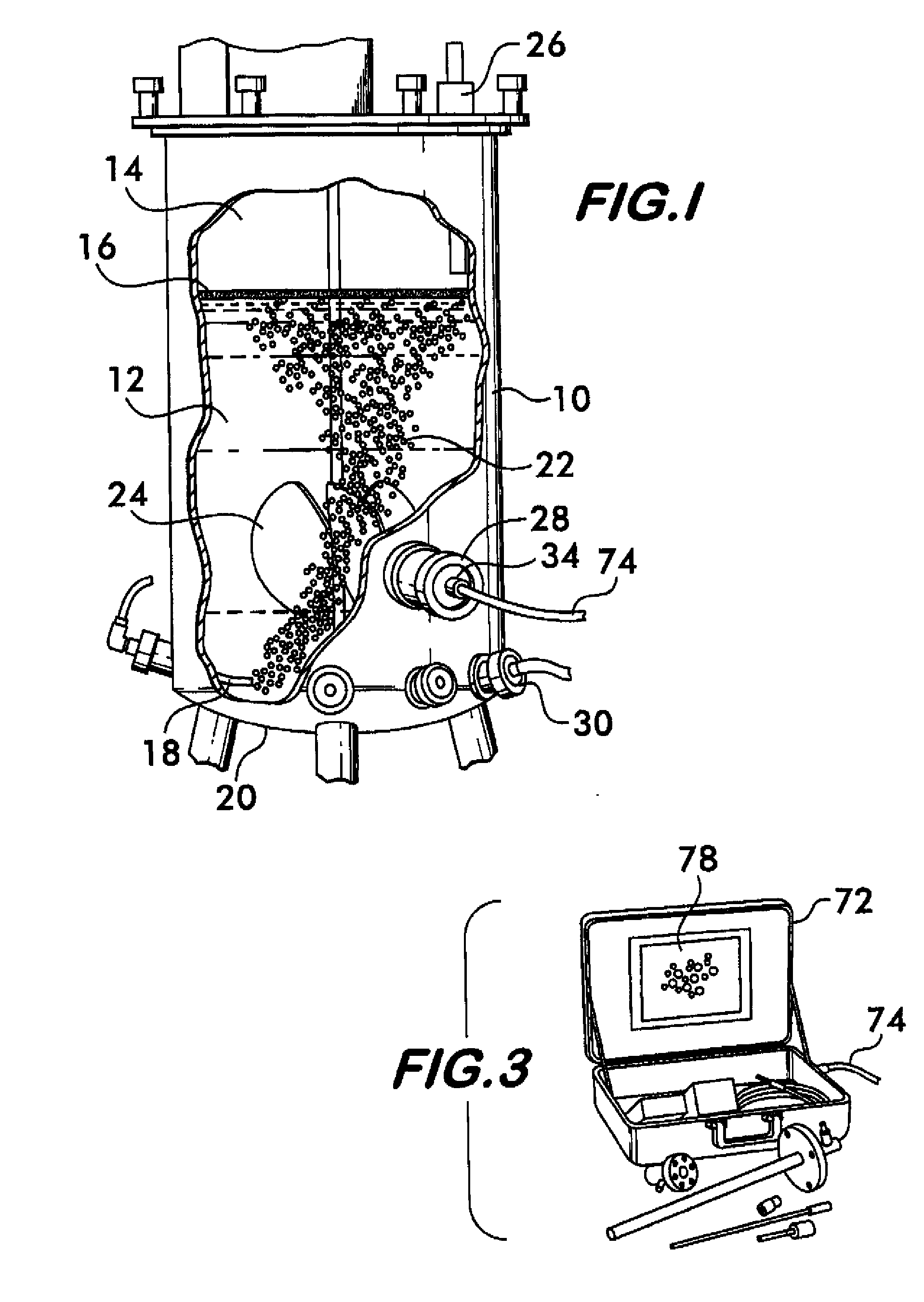Image Recognition and Analysis System and Software
a technology of image recognition and analysis system, applied in the field of image recognition computer software, can solve the problems of consuming oxygen in the culture, causing a large amount of foam in the headspace of the vessel, and affecting the quality of the imag
- Summary
- Abstract
- Description
- Claims
- Application Information
AI Technical Summary
Benefits of technology
Problems solved by technology
Method used
Image
Examples
Embodiment Construction
[0028]The present invention relates to a system and method for analyzing bubbles, cells, or other small particles in a process liquid. For example, gas released from a sparger within a process liquid contained in a vessel may be observed in-situ with at least one vision probe extending through one or more access ports in the walls of the vessel. The gas bubbles within the process liquid may be distributed and sheared within the liquid by an agitator located adjacent the sparger. The vessel may have multiple access ports located at different locations for enabling different areas within the vessel to be observed. The vision probes are mounted within the access ports and may include interchangeable parts, such as cameras, lens assemblies, sensors, light guides, light sources, etc., permitting a desired observation to be obtained.
[0029]The bubbles, cells, or other particles are observed by projecting light from the vision probe into the vessel to illuminate the gas bubbles, cells, or o...
PUM
 Login to View More
Login to View More Abstract
Description
Claims
Application Information
 Login to View More
Login to View More - R&D
- Intellectual Property
- Life Sciences
- Materials
- Tech Scout
- Unparalleled Data Quality
- Higher Quality Content
- 60% Fewer Hallucinations
Browse by: Latest US Patents, China's latest patents, Technical Efficacy Thesaurus, Application Domain, Technology Topic, Popular Technical Reports.
© 2025 PatSnap. All rights reserved.Legal|Privacy policy|Modern Slavery Act Transparency Statement|Sitemap|About US| Contact US: help@patsnap.com



